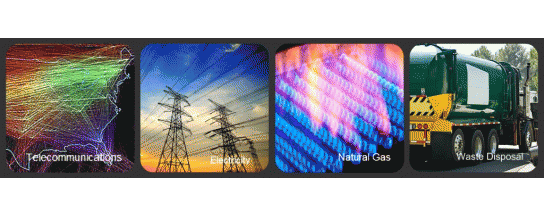|
Chemical energy is energy stored in the bonds of atoms and molecules. Batteries, biomass, petroleum, natural gas, and coal are examples of stored chemical energy. Chemical energy is converted to thermal energy when we burn wood in a fireplace or burn gasoline in a car's engine.
Mechanical energy is energy stored in objects by tension. Compressed springs and stretched rubber bands are examples of stored mechanical energy.
Nuclear energy is energy stored in the nucleus of an atom — the energy that holds the nucleus together. Very large amounts of energy can be released when the nuclei are combined or split apart. Nuclear power plants split the nuclei of uranium atoms in a process called fission. The sun combines the nuclei of hydrogen atoms in a process called fusion.
Gravitational energy is energy stored in an object's height. The higher and heavier the object, the more gravitational energy is stored. When you ride a bicycle down a steep hill and pick up speed, the gravitational energy is being converted to motion energy. Hydropower is another example of gravitational energy, where the dam "piles" up water from a river into a reservoir.
|
Radiant energy is electromagnetic energy that travels in transverse waves. Radiant energy includes visible light, x-rays, gamma rays and radio waves. Light is one type of radiant energy. Sunshine is radiant energy, which provides the fuel and warmth that make life on Earth possible.
Thermal energy, or heat, is the vibration and movement of the atoms and molecules within substances. As an object is heated up, its atoms and molecules move and collide faster. Geothermal energy is the thermal energy in the Earth.
Motion energy is energy stored in the movement of objects. The faster they move, the more energy is stored. It takes energy to get an object moving, and energy is released when an object slows down. Wind is an example of motion energy. A dramatic example of motion is a car crash, when the car comes to a total stop and releases all its motion energy at once in an uncontrolled instant.
Sound is the movement of energy through substances in longitudinal (compression/rarefaction) waves. Sound is produced when a force causes an object or substance to vibrate — the energy is transferred through the substance in a wave. Typically, the energy in sound is far less than other forms of energy.
Electrical energy is delivered by tiny charged particles called electrons, typically moving through a wire. Lightning is an example of electrical energy in nature, so powerful that it is not confined to a wire.
|
